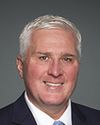Thank you very much, Mr. Chair.
Good afternoon, members of the House of Commons Standing Committee on Veterans Affairs. I'm very grateful for the opportunity to present a human side to the systemic issues Canada's veterans and their loved ones are subjected to when requesting financial benefits and treatment services for the injuries and illnesses they sustained in service to Canada.
My testimony today is drawn from my own experiences in navigating through Veterans Affairs Canada's complex policies and procedures. Unfortunately, my experiences are shared by countless other veterans, who, since I have gone public about my grievances with Veterans Affairs, have connected with me to share their stories of sanctuary trauma when they were attempting, like me, to take steps in their healing journey.
The current system of three benefits regimes, coupled with constantly changing policies and procedures, presents major barriers to veterans accessing benefits and services. This frequently exacerbates the veterans' injuries and illnesses and leads to them abandoning their claims.
During my exit interview from the Canadian Armed Forces in 2008, a Veterans Affairs employee assessed me to be at high risk of contracting post-traumatic stress disorder. This was not brought to my attention, and my family and I suffered immensely for almost a year. After taking treatment matters into my own hands, I was eventually diagnosed with post-traumatic stress disorder in 2009.
I discovered the note in my file after recently accessing my DND and Veterans Affairs file through an access to information request. Sadly, this was not the first of many times that Veterans Affairs would fail to support me as I struggled to manage the injuries and illnesses I sustained in service to Canada.
In 2013, my case management was removed without my knowledge. I made attempts to contact my case manager several times and received no response. In 2018, I required approval for a medical device that was above the Medavie Blue Cross grid amount. Without a case manager, I was left communicating with the national contact centre network and, at best, a Veterans Affairs service agent on the telephone, who had no authority to approve costs for a medical advice above the grid amount.
Eventually, I was forced to seek the assistance of my member of Parliament, as the unsupportive Veterans Affairs processes were exacerbating my injuries and my mental health was deteriorating. It took several months of advocating, appeals and my MP's involvement to eventually receive the device.
My health took a steep downward turn in 2018. With a disability rate of 93%, I was left to navigate the Veterans Affairs processes on my own. Unable to balance the demands placed on me as a employer, parent, partner and person, I wasn't able to continue working. I applied for the diminished earning capacity career impact allowance and career impact allowance supplement in July 2018 through the My VAC online portal. This application was rejected because I had no case management to complete the referral to the regional interdisciplinary team in Edmonton.
Finally, I was assigned a newly hired case manager in November 2018. By this time, my total disability rate had increased to 123% due to injury reassessments that I facilitated on my own. In December 2018, my case manager advised me to apply for the career impact allowance, and I was approved in January 2019.
When I inquired about my diminished earning capacity application, my case manager explained that they needed to consult with their mentor about my eligibility. I never received any follow-up from my case manager with regard to my DEC application after that. I was relying on my case manager to support me in accessing benefits that I desperately needed. Sadly, reviewing my files highlighted that my case manager was not engaged and did not request any medical progress reports from my numerous health care providers, nor did they complete a case management plan to identify my needs. My file was never updated to reflect my treatment needs and financial benefits entitlements.
Prior to the introduction of the pension for life, I lost contact with my case manager, as they terminated their employment with Veterans Affairs and my file was not handed over to another case manager. Because of this negligence, I lost out on the diminished earning capacity and the CIA supplement. Although an internal memorandum was distributed to veterans service teams across Canada stating that any veteran who was participating actively or inactively in various programs was to receive a DEC and secure financial benefits before the change of legislation on April 1, 2019, my case manager did not receive that memorandum. It was not until later on, in April 2019, after the legislation changed, that I was assigned a new case manager when I contacted Veterans Affairs.
In addition to this, the government still has not acknowledged the harmful effects of mefloquine. As a veteran who is suffering from the effects of mefloquine toxicity, officially known as quinism, I currently have two injury claims attributed to mefloquine toxicity in the backlog. I cannot wait for this specialized [Inaudible--Editor] for another two years. Mefloquine is being delayed in the courts currently, which is delaying the outreach, screening and the independent inquiry, which is so important and was costed by the PBO.
In conclusion, I wish to reinforce that the service delivery model is broken. There is a three-tiered benefits regime system with major benefits disparities. I, for one, fall under all three benefits regimes and the financial disparity is in the range of $3,000 to $4,000 per month.
Veterans were promised that they would never have to take their country and their government to court for the benefits and services they are entitled to, yet today we are seeing a record number of veteran lawsuits and Human Rights Commission complaints in process.
I voluntarily served Canada's military. I would do it again, but respectfully, you owe me and thousands of veterans a better duty of care.
Thank you for your time.



